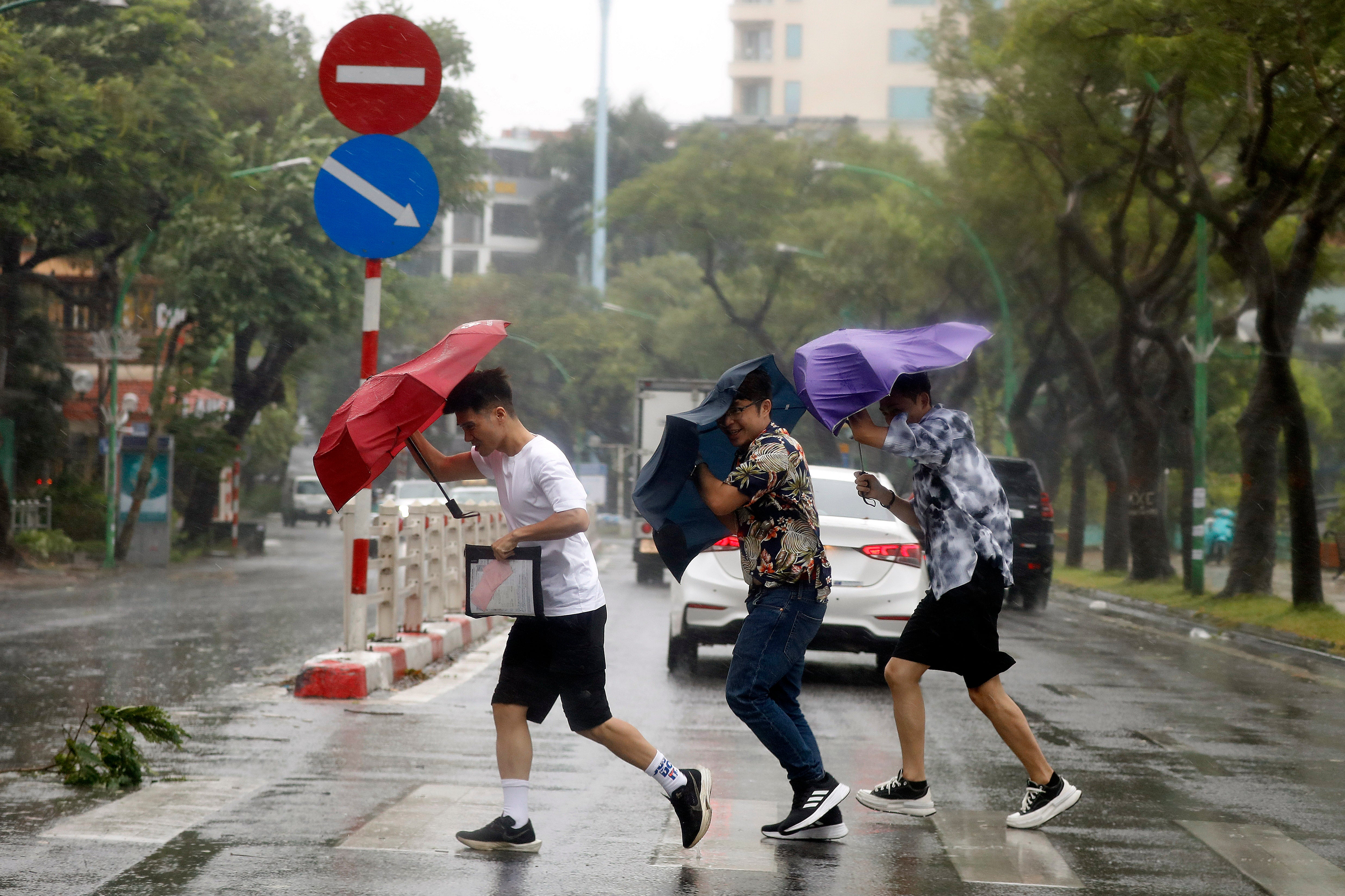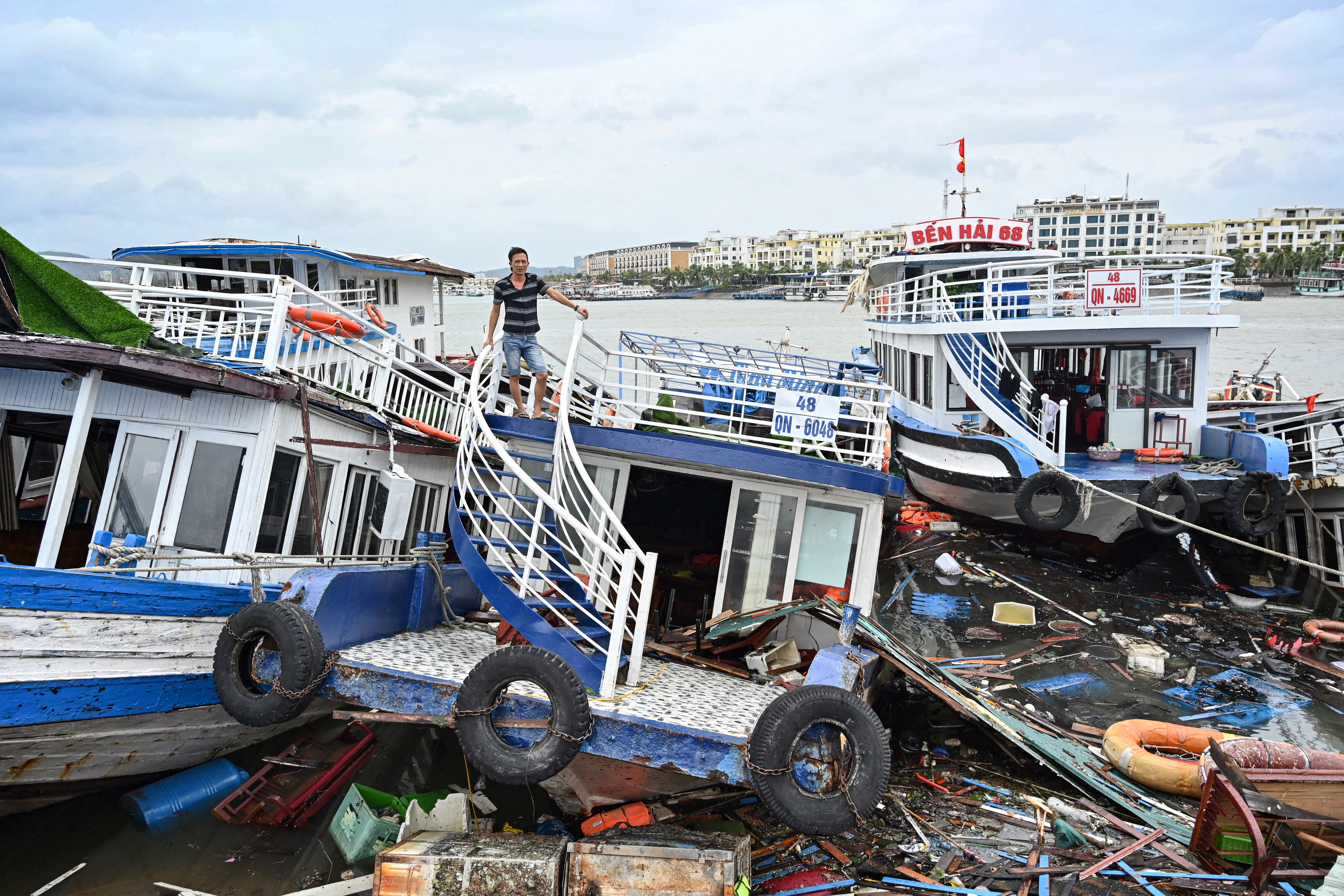Your support helps us tell the story
As a White House correspondent, I ask hard questions and want important answers.
Your support allows me to stand in the chamber and speak for transparency and accountability. Without your support, I wouldn’t have the resources to take on those in power.
Your donation allows us to continue our important work of keeping you informed every step of the way leading up to the November election.
Andrew Feinberg
White House Correspondent
Typhoon Yagi, Asia’s strongest storm this year, battered northern Vietnam over the weekend, killing at least 59 people after heavy rains caused landslides and floods.
The storm caused widespread damage over the weekend, injuring about 300 people and leaving 24 missing, the country’s disaster management agency said on Monday.
Typhoon Yagi made landfall on Vietnam’s northeastern coast on Saturday after battering China and the Philippines, bringing torrential rains and strong winds and disrupting power and communications, particularly in the provinces of Quang Ninh and Hai Phong.
The typhoon killed nine people when it first made landfall, but the death toll rose as floods and landslides killed a further 50 people.
A bridge collapsed and a bus was swept away by floodwaters on Monday, state media reported, raising concerns the danger would continue as more rains battered the region.
The mountainous province of Lao Cai saw the greatest number of deaths and injuries, with 13 people killed in landslides and one killed in flash floods.
According to the National Center for Hydrometeorological Forecasting, rainfall in different parts of the affected region ranged from 208 to 433 mm (8.2 to 17.1 inches).
Water levels in several rivers in the north have reached dangerous levels, posing further risk of flash flooding and damage to properties.

Typhoon Yagi weakened to a tropical depression on Sunday but is expected to bring more rain to Vietnam, with the meteorological agency predicting an increased risk of further flooding and landslides in northern provinces such as Lang Son, Cao Bang, Yen Bai and Thai Nguyen in an alert on Monday.
“Floods and landslides are damaging the environment and threatening people’s lives,” the center said in a statement.
Among the victims was a family of four whose home was destroyed when heavy rains caused a hill to collapse in the mountainous province of Hoa Binh.
Six people, including a newborn and a one-year-old, have been killed in a landslide in the Hoang Lien Son mountain range.
“We found six bodies in the landslide, including a one-year-old boy and a newborn,” a local official from Sapa People’s Committee, speaking on condition of anonymity, told AFP.
“The rains are intense, the soil is weak, [the] “Landslide.”

The Defense Ministry’s Disaster Prevention Management Bureau reported that some people had been killed in storm-related accidents, including being crushed by fallen trees and swept away by drifting boats.
At sea, strong winds and waves sunk 30 boats near the boat lock in Quang Ninh province along the UNESCO World Heritage Site of Halong Bay.
On land, around 3,300 homes and more than 120,000 hectares of crops were damaged.
In addition to the human casualties, local fishermen were busy assessing the severe damage caused to their boats and fishing gear by the storm.
Before hitting Vietnam, Typhoon Yagi also hit parts of southern China and the Philippines, where at least 24 people were killed and dozens injured.
In addition, more than 400,000 people were forced to evacuate in Hainan Province.
Experts have noted worrying trends in tropical cyclones in the region: Climate change is causing storms to form closer to the coast, intensify more quickly, and linger longer over land, and a recent study published in July warned that the risks will grow as weather patterns continue to evolve.
The Independent newspaper Climate 100 List We will be holding an online event in New York in September.










